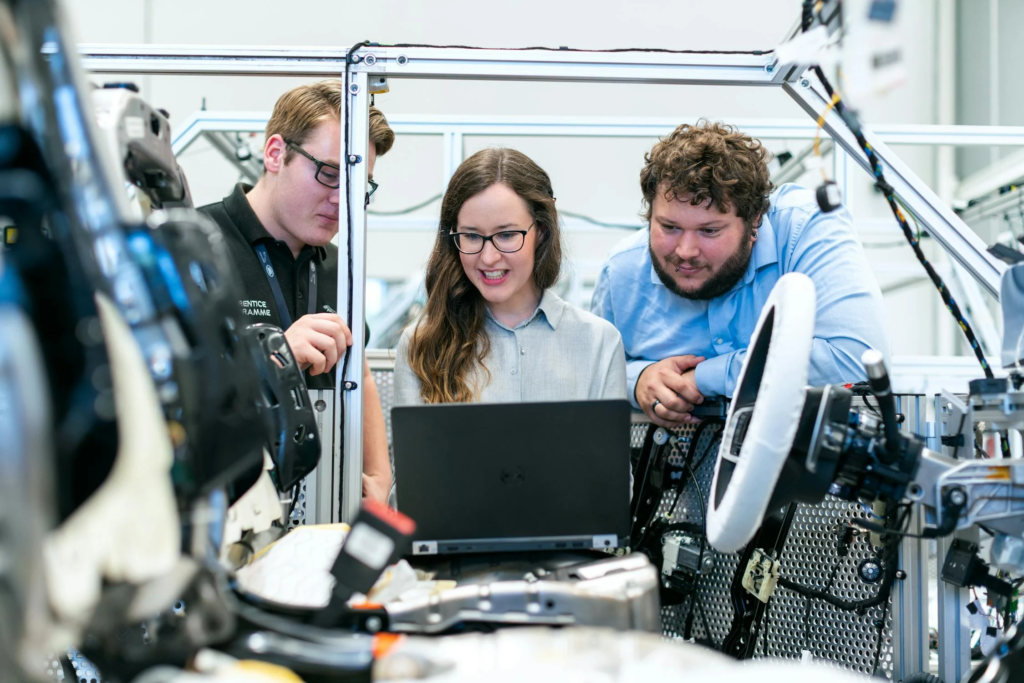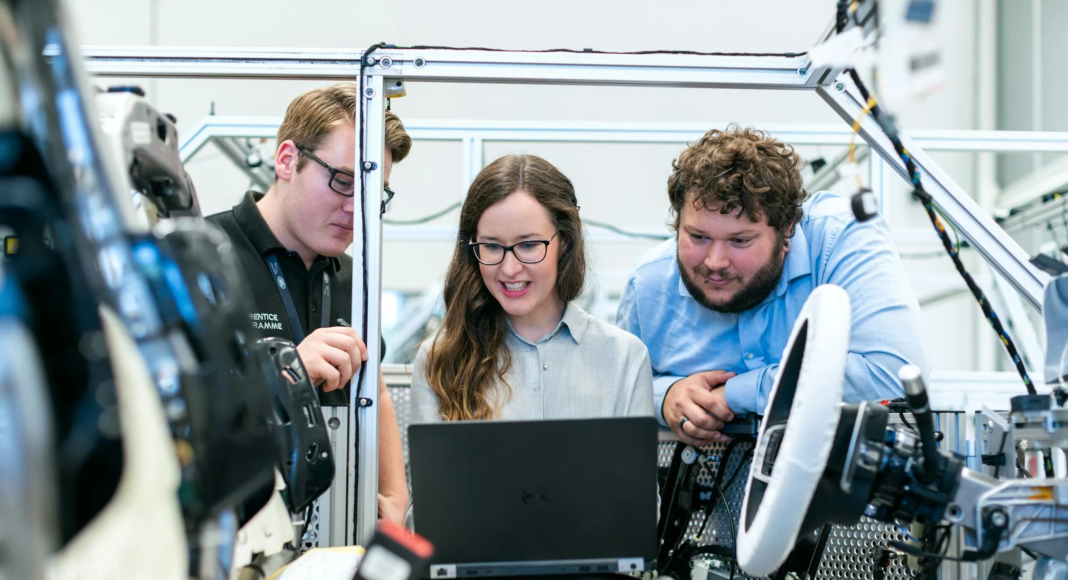Key Takeaways
- Automated testing adoption is soaring, driven by faster release cycles and the need for enhanced software quality across industries.
- AI-driven testing tools are revolutionizing the industry, offering self-healing scripts and predictive analytics for smarter test execution.
- Cloud-based testing solutions are gaining popularity, enabling scalable, cross-environment testing for more efficient software delivery.
In today’s fast-paced digital landscape, software development teams are under increasing pressure to deliver high-quality applications with faster release cycles.
To meet these demands, automated testing has become a critical component of the software development lifecycle (SDLC).
By leveraging automation, organizations can enhance efficiency, reduce human errors, and accelerate time to market while ensuring software reliability and performance.
With the rapid adoption of DevOps, Agile methodologies, and continuous integration/continuous deployment (CI/CD) pipelines, automated testing has evolved into an essential practice for modern software development.

The global automated testing market is experiencing exponential growth, driven by the need for higher efficiency, improved software quality, and reduced costs associated with manual testing.
Businesses across industries, from finance and healthcare to e-commerce and technology, are increasingly investing in automated testing tools to optimize their development workflows.
Emerging technologies such as artificial intelligence (AI), machine learning (ML), and robotic process automation (RPA) are further revolutionizing the field, enabling more intelligent test execution, self-healing scripts, and predictive analytics for enhanced decision-making.
The latest industry reports reveal significant trends in automated testing adoption, with organizations prioritizing test automation frameworks, cloud-based testing solutions, and AI-driven testing tools.
Companies are recognizing the long-term benefits of automation, including faster regression testing, broader test coverage, and improved scalability.
As a result, the demand for advanced automated testing solutions continues to surge, shaping the future of software quality assurance (QA) and development practices.
This article provides an in-depth look at the latest automated testing software statistics, key industry data, and emerging trends that are transforming software testing in 2025 and beyond.
By exploring these insights, businesses can better understand the evolving landscape, make informed decisions, and stay ahead of the competition in a highly dynamic software ecosystem.
Whether you are a software developer, QA engineer, business leader, or IT decision-maker, understanding the latest trends and data in automated testing can help you optimize your testing strategies and drive greater efficiency in software delivery.
Before we venture further into this article, we would like to share who we are and what we do.
About 9cv9
9cv9 is a business tech startup based in Singapore and Asia, with a strong presence all over the world.
With over nine years of startup and business experience, and being highly involved in connecting with thousands of companies and startups, the 9cv9 team has listed some important learning points in this overview of the Top 55 Latest Automated Testing Software Statistics, Data & Trends.
If your company needs recruitment and headhunting services to hire top-quality employees, you can use 9cv9 headhunting and recruitment services to hire top talents and candidates. Find out more here, or send over an email to [email protected].
Or just post 1 free job posting here at 9cv9 Hiring Portal in under 10 minutes.
Top 55 Latest Automated Testing Software Statistics, Data & Trends
- Automation Testing Market Size in 2024: The automation testing market is projected to reach approximately $25.4 billion by the end of 2024, reflecting a significant increase in demand for automated testing solutions across various industries.
- Automation Testing Market Size in 2025: In 2025, the automation testing market is expected to grow further to about $29.29 billion, driven by the need for faster and more efficient software testing processes.
- CAGR of Automation Testing Market from 2024 to 2025: The automation testing market is anticipated to experience a compound annual growth rate (CAGR) of 15.3% from 2024 to 2025, highlighting the rapid expansion of this sector.
- Projected Automation Testing Market Size by 2029: By 2029, the automation testing market is forecasted to reach a substantial size of approximately $59.91 billion, driven by advancements in technology and increased adoption of automation tools.
- CAGR of Automation Testing Market from 2024 to 2029: Over the period from 2024 to 2029, the automation testing market is projected to achieve a CAGR of 19.6%, indicating a robust growth trajectory due to rising demand for automated testing solutions.
- Automation Testing Market Size in 2023: In 2023, the automation testing market was valued at around $40.8 billion, reflecting the growing importance of automated testing in software development.
- Projected Automation Testing Market Size by 2030: By 2030, the automation testing market is expected to expand significantly to approximately $136.4 billion, driven by the increasing need for efficient and reliable software testing.
- CAGR of Automation Testing Market from 2023 to 2030: From 2023 to 2030, the automation testing market is anticipated to experience a CAGR of 18.8%, highlighting the sector’s potential for sustained growth.
- AI-Driven Testing Coverage in 2025: By 2025, AI-driven testing is expected to cover more than 60% of overall test cases in enterprise environments, reflecting the increasing reliance on AI for efficient testing processes.
- Increase in Spending on Test Automation Tools: Over the past year, there has been a nearly 30% increase in spending on test automation tools, indicating a significant shift towards automation in the testing industry.
- Reduction in Manual Testing Efforts in 2025: In 2025, many organizations are expected to reduce their manual testing efforts by over 40%, as automated testing becomes more prevalent and efficient.
- CI/CD Adoption Rate: Approximately 70% of development teams integrate automated tests into their Continuous Integration/Continuous Deployment (CI/CD) pipelines, highlighting the widespread adoption of automated testing in modern software development.
- Automation Testing Market Size in 2022: In 2022, the automation testing market was valued at approximately $24.7 billion, marking a significant milestone in the growth of automated testing solutions.
- Projected Automation Testing Market Size by 2027: By 2027, the automation testing market is projected to reach around $52.7 billion, driven by technological advancements and increased demand for efficient testing processes.
- CAGR of Automation Testing Market from 2022 to 2027: From 2022 to 2027, the automation testing market is expected to achieve a CAGR of 16.4%, reflecting the sector’s steady growth trajectory.
- Percentage of Testers Using Manual Testing in 2025: In 2025, up to 82% of testers are expected to still use manual testing methods, despite the growing trend towards automation.
- Percentage of Testers Automating Regression Testing: Around 45% of testers automate regression testing, highlighting the importance of automation in repetitive testing tasks.
- Top Challenges in Achieving Quality Goals: The top challenges in achieving quality goals include insufficient time (55%) and high workload (44%), which automation can help alleviate.
- Interest in AI-Driven Testing Tools: There is a significant interest in AI-driven testing tools, with 61% of testers expressing interest in leveraging AI for more efficient testing processes.
- Adoption of CI/CD Tools: Approximately 48% of testers plan to adopt CI/CD tools, reflecting the growing importance of continuous testing in software development.
- Use of AI for Test Case Generation: 72% of testers use AI for test case generation, highlighting the role of AI in optimizing testing workflows.
- Use of AI for Test Optimization: 35% of testers use AI for test optimization, indicating a growing trend towards leveraging AI for improving test efficiency.
- Belief in AI Importance in Next 3-5 Years: 82% of testers believe AI will be crucial in the next 3-5 years, reflecting the anticipated impact of AI on the testing industry.
- Involvement of End-Users in Testing: 51.53% of testers involve end-users in testing processes, highlighting the importance of user feedback in software quality assurance.
- Positive ROI from Automation Projects: 36% of testers recorded a positive return on investment (ROI) from automation projects, demonstrating the financial benefits of automation.
- Significant ROI from Automation Projects: 21% of testers reported a significant ROI from automation projects, further emphasizing the economic advantages of automated testing.
- Strategies for Scaling AI in Testing: Key strategies for scaling AI in testing include increasing automation coverage (72.88%) and investing in AI/ML (67.16%).
- Projected Automation Testing Market Size by 2025 (Alternative Estimate): An alternative estimate suggests the automation testing market could reach $68 billion by 2025, reflecting varying projections based on different market analyses.
- Software Testing Market Size in 2023: In 2023, the overall software testing market was valued at over $45 billion, underscoring the significant role testing plays in software development.
- Projected Software Testing Market Size by 2027: By 2027, the software testing market is projected to grow to approximately $109.5 billion, driven by the increasing complexity of software applications.
- CAGR of Software Testing Market from 2023 to 2027: From 2023 to 2027, the software testing market is expected to experience a CAGR of about 5%, reflecting steady growth in the sector.
- Percentage of Development Budget Allocated to QA: Approximately 40% of the development budget is typically allocated to quality assurance (QA), highlighting the importance of testing in software development processes.
- Global Software Testers per 100,000 People: Globally, there are approximately 5.2 software testers per 100,000 people, indicating a relatively low density of testing professionals worldwide.
- Software Testers per 100,000 People in Ireland: In Ireland, there are 61.2 software testers per 100,000 people, reflecting a high concentration of testing professionals in this region.
- Software Testers per 100,000 People in the U.S. and Canada: In the U.S. and Canada, there are approximately 37.1 software testers per 100,000 people, highlighting a significant presence of testing professionals in these countries.
- Software Testers per 100,000 People in Israel: Israel has about 36.5 software testers per 100,000 people, indicating a notable concentration of testing professionals in this region.
- Percentage of IT Teams Increasing QA Budgets Due to Frequent Releases: 52% of IT teams are increasing their QA budgets due to the need for more frequent software releases, reflecting the growing importance of testing in agile development environments.
- Percentage of Companies Automating 50% or More of Their Testing: In 2020, 44% of companies automated 50% or more of their testing processes, highlighting the trend towards increased automation in testing.
- Percentage of Companies with Automated Test Cases Constituting 50% of Total Test Cases: Nearly half of surveyed companies reported that automated test cases constitute 50% of their total test cases, indicating a significant shift towards automation.
- Percentage of Companies Reporting Immediate ROI from Test Automation: About one-quarter of companies reported an immediate return on investment (ROI) from test automation, demonstrating the financial benefits of automation.
- Percentage of Companies Reporting ROI Increase Within First Six Months of Test Automation: 24% of companies reported an increase in ROI within the first six months of implementing test automation, highlighting the rapid financial benefits of automation.
- Percentage of Companies Reporting ROI Increase Within One Year of Test Automation: 28% of companies reported an increase in ROI within one year of implementing test automation, further emphasizing the long-term financial advantages of automation.
- Percentage of Companies with Fully Automated Testing: Only 5% of companies have fully automated their testing processes, indicating that while automation is growing, there is still room for further adoption.
- Common Manual to Automation Testing Ratio: A common ratio for manual to automation testing is 75:25 or 50:50, reflecting the balance between manual and automated testing in many organizations.
- Percentage of Companies Aiming for a 50:50 or 25:75 Manual to Automation Ratio: 73% of companies aim for a 50:50 or 25:75 manual to automation ratio, highlighting the goal of achieving a balanced testing approach.
- Percentage of Companies Aiming to Eliminate Manual Testing Entirely: 14% of companies aim to eliminate manual testing entirely, reflecting a more aggressive approach towards automation.
- Automation Testing Market Size in 2019: In 2019, the automation testing market was valued at approximately $15.87 billion, marking an earlier stage in the market’s growth.
- Projected Automation Testing Market Size by 2025 (Alternative Estimate): An alternative projection suggests the automation testing market could reach $49.9 billion by 2025, reflecting different market forecasts.
- Percentage of Teams Replacing Up to 50% of Manual Testing with Automation: 26% of teams are replacing up to 50% of their manual testing with automation, indicating a moderate level of automation adoption.
- Percentage of Teams Replacing 75% or More of Manual Testing with Automation: 20% of teams are replacing 75% or more of their manual testing with automation, highlighting a more extensive adoption of automation in some organizations.
- Percentage of Teams Reporting No Reduction in Manual Testing Due to Automation: 14% of teams reported no reduction in manual testing due to automation, suggesting that automation does not always lead to a decrease in manual testing efforts.
- Percentage of Large Organizations Deploying AI in Testing Workflows: 42% of large organizations are deploying AI in their testing workflows, reflecting the growing use of AI in testing processes.
- Percentage of Organizations Exploring Generative AI for Test Case Creation: 40% of organizations are exploring the use of generative AI for test case creation, highlighting the interest in leveraging AI for more efficient testing.
- Percentage of Organizations Believing Test Automation Speeds Up Innovation: 75% of organizations believe that test automation speeds up innovation, emphasizing the role of automation in accelerating software development.
- Percentage of Organizations Reporting Significant Improvements in Application Quality Due to Test Automation: 60% of organizations reported significant improvements in application quality due to test automation, demonstrating the positive impact of automation on software quality.
Conclusion
The landscape of software testing has undergone a significant transformation in recent years, with automation emerging as a fundamental pillar of modern development workflows. As organizations continue to embrace Agile, DevOps, and CI/CD methodologies, automated testing is playing an increasingly critical role in ensuring software quality, efficiency, and speed to market. The latest statistics, data, and trends highlight a growing reliance on test automation tools, AI-driven solutions, and cloud-based testing infrastructures, signaling a shift towards more intelligent and scalable testing frameworks.
The demand for automated testing is driven by several key factors, including the need for faster software releases, improved test coverage, and reduced dependency on manual testing. Businesses across industries—ranging from finance and healthcare to e-commerce and technology—are leveraging automation to enhance their quality assurance (QA) processes while minimizing operational costs. AI-powered testing tools are revolutionizing the field by enabling self-healing test scripts, predictive analytics, and autonomous test execution, significantly improving efficiency and reducing maintenance efforts.
Moreover, as software applications become increasingly complex, the role of automated testing in addressing scalability challenges cannot be overstated. Cloud-based testing solutions are gaining momentum, allowing organizations to conduct large-scale tests across multiple environments and devices seamlessly. The integration of AI, machine learning, and robotic process automation (RPA) is further optimizing the testing lifecycle, helping businesses detect defects earlier in the development process and enhance overall product reliability.
Despite its advantages, automated testing is not without its challenges. Organizations must carefully select the right tools, frameworks, and strategies to ensure successful implementation. Maintaining test scripts, addressing false positives, and ensuring compatibility with evolving software architectures remain critical concerns for QA teams. However, the benefits of automation far outweigh the challenges, making it an indispensable component of modern software development.
As the industry continues to evolve, staying updated with the latest automated testing software statistics, data, and trends will be essential for businesses aiming to maintain a competitive edge. Companies that invest in robust automation frameworks, AI-driven solutions, and scalable testing strategies will be better positioned to enhance software quality, accelerate delivery cycles, and meet growing user expectations.
Looking ahead, the future of automated testing will be shaped by advancements in AI, continuous testing, and shift-left testing strategies, where testing is integrated earlier in the development process. Organizations that proactively adapt to these emerging trends will not only improve their QA efficiency but also drive greater innovation and business growth. By leveraging the insights from the latest industry statistics and trends, businesses can make informed decisions, optimize their testing strategies, and build resilient, high-performing software applications in an increasingly competitive digital ecosystem.
If you find this article useful, why not share it with your hiring manager and C-level suite friends and also leave a nice comment below?
We, at the 9cv9 Research Team, strive to bring the latest and most meaningful data, guides, and statistics to your doorstep.
To get access to top-quality guides, click over to 9cv9 Blog.
People Also Ask
What is automated testing?
Automated testing uses software tools to perform tests on applications automatically, reducing human intervention. It helps in identifying defects, ensuring quality, and speeding up the software development process, especially in continuous integration environments.
Why is automated testing important?
Automated testing is crucial as it improves testing efficiency, reduces human errors, enhances test coverage, and speeds up regression testing. It enables faster feedback during development cycles, which is vital in Agile and DevOps environments.
What are the benefits of automated testing?
Automated testing provides faster execution, repeatability, improved accuracy, cost savings in the long term, and better coverage. It helps in detecting defects early, reducing manual effort, and supports continuous integration and delivery pipelines.
How does automated testing work?
Automated testing works by using scripts or tools to execute predefined test cases on the application. The tests are automated to run without human intervention, providing consistent results and faster feedback compared to manual testing.
What are the different types of automated testing?
Types include functional testing, regression testing, load testing, performance testing, unit testing, integration testing, and UI testing. Each type focuses on different aspects of the software, from validating functionality to checking system performance under stress.
What are the best tools for automated testing in 2024?
Popular tools include Selenium, Appium, TestComplete, Katalon Studio, and Cypress. These tools support various types of testing and offer features like cross-browser testing, reporting, and integration with CI/CD pipelines.
How do AI-driven testing tools enhance automation?
AI-driven tools enhance automation by utilizing machine learning to predict test cases, detect patterns, and create smarter test scripts that adapt to changes in the application, making the testing process more efficient and reducing maintenance efforts.
What role does cloud-based testing play in automation?
Cloud-based testing allows organizations to run automated tests on remote servers, providing scalability, access to different devices, and faster execution. It enables businesses to test applications across multiple environments without needing physical hardware.
How does automated testing integrate with CI/CD pipelines?
Automated testing seamlessly integrates with CI/CD pipelines to run tests on each code change, providing instant feedback on code quality. This accelerates development, helps detect defects early, and ensures faster releases.
Is automated testing suitable for all projects?
Automated testing is ideal for projects with repetitive tasks, large-scale applications, or frequent updates. However, for small projects or those with rapidly changing requirements, manual testing might be more cost-effective.
What are the challenges of implementing automated testing?
Challenges include the high initial setup cost, script maintenance, complexity of selecting the right tools, and the need for skilled testers. Automated testing also requires time and effort for setup, particularly in legacy applications.
How does automated testing improve software quality?
Automated testing improves software quality by ensuring consistency in test execution, reducing human error, and providing better coverage. It allows for faster identification of bugs and issues, ensuring a higher-quality product is delivered.
Can automated testing detect all types of defects?
Automated testing can detect many types of defects, particularly those related to functionality and performance. However, it may struggle with detecting issues that require human judgment, such as UI/UX problems or visual inconsistencies.
What is the difference between manual and automated testing?
Manual testing involves testers executing test cases manually without the use of automation tools. In contrast, automated testing uses scripts or tools to run tests, providing faster results and reducing human error, especially for repetitive tests.
How does automated testing support Agile and DevOps?
Automated testing supports Agile and DevOps by enabling faster feedback on code changes, ensuring that defects are detected early. It helps maintain continuous testing cycles in short sprint iterations, facilitating faster releases and continuous improvement.
What are the latest trends in automated testing?
Recent trends include the adoption of AI and machine learning in testing tools, increased use of cloud-based testing platforms, automation of security testing (DevSecOps), and a stronger focus on testing mobile and web applications with cross-browser capabilities.
What is the impact of AI in automated testing?
AI enhances automated testing by enabling smarter test creation, self-healing test scripts, and predictive analytics. AI can also improve test coverage and efficiency, making automated testing more adaptable to changing codebases and environments.
What industries benefit the most from automated testing?
Industries such as finance, healthcare, e-commerce, and technology benefit greatly from automated testing due to their need for high-quality, secure, and scalable applications. These industries require frequent testing cycles, making automation a vital part of their SDLC.
What is regression testing in automated testing?
Regression testing involves running automated tests to ensure that new code changes do not negatively affect existing functionality. It is essential in maintaining software stability during continuous updates and releases.
How does automated testing handle large-scale applications?
Automated testing is essential for large-scale applications as it can run tests across multiple environments, devices, and configurations quickly. It ensures that complex, large applications are thoroughly tested without manual intervention.
How much does automated testing cost?
The cost of automated testing can vary significantly depending on factors like the tools used, the complexity of the application, and the need for custom scripts. While initial setup costs can be high, automation provides long-term savings by reducing manual effort.
What is test script maintenance in automated testing?
Test script maintenance involves updating automated test scripts to adapt to changes in the application. As software evolves, automated tests must be adjusted to ensure they remain relevant and accurate, a key challenge in automated testing.
How does automated testing improve time-to-market?
By running tests quickly and repeatedly, automated testing accelerates the identification of defects and reduces the time required for testing. This leads to faster release cycles, allowing businesses to deliver applications to market sooner.
What are the limitations of automated testing?
Automated testing is limited in areas requiring human judgment, such as usability and exploratory testing. It also requires substantial upfront investment in tools and scripts and may not be cost-effective for small projects or those with rapidly changing requirements.
How do automated testing tools handle cross-browser testing?
Automated testing tools handle cross-browser testing by running the same test scripts across multiple browsers and devices to ensure consistency in behavior. This is essential for web applications that need to function smoothly across various platforms.
What is performance testing in automated testing?
Performance testing in automated testing measures how an application performs under varying loads. It helps identify bottlenecks, optimize system performance, and ensure that the application can handle expected user traffic without issues.
What is the role of automated testing in security?
Automated testing can play a key role in identifying vulnerabilities through security testing. Tools can scan for potential security flaws, ensuring that applications are safe from common threats like SQL injections, XSS attacks, and other exploits.
How does automated testing handle mobile applications?
Automated testing for mobile applications involves testing on various devices and screen sizes using tools that simulate real user interactions. It ensures that mobile apps perform consistently across different platforms, such as iOS and Android.
Can automated testing be used for both web and mobile apps?
Yes, automated testing tools support both web and mobile applications. They allow testers to execute the same tests across different platforms, ensuring that functionality, performance, and UI are consistent on both desktop and mobile devices.
What are the most common automated testing tools in 2024?
Common tools include Selenium, Katalon Studio, Cypress, TestComplete, and Appium. These tools support a variety of testing needs, such as functional, regression, and performance testing, and are widely used for both web and mobile applications.
How does automated testing improve collaboration between developers and testers?
Automated testing improves collaboration by providing quick feedback on code changes, allowing developers and testers to identify and resolve issues early. This fosters a more integrated approach, reducing communication barriers and accelerating development cycles.
What is the future of automated testing?
The future of automated testing involves deeper integration of AI and machine learning, allowing tools to learn from past test results and adapt to new requirements. Cloud-based testing will become even more prevalent, enabling faster and more scalable test execution.
How does automated testing help in bug detection?
Automated testing helps detect bugs early by executing test scripts consistently and frequently. The faster feedback loop allows teams to identify defects before they escalate, improving the overall quality and stability of the software.
What is the difference between unit and integration testing in automation?
Unit testing verifies individual components or functions of an application, ensuring they work in isolation. Integration testing checks the interaction between components, ensuring that they work together as intended when combined. Both are crucial in automated testing.
Sources:
- GlobeNewswire
- LoadFocus
- BrowserStack
- Katalon
- Global App Testing
- Testlio































![Writing A Good CV [6 Tips To Improve Your CV] 6 Tips To Improve Your CV](https://blog.9cv9.com/wp-content/uploads/2020/06/2020-06-02-2-100x70.png)


